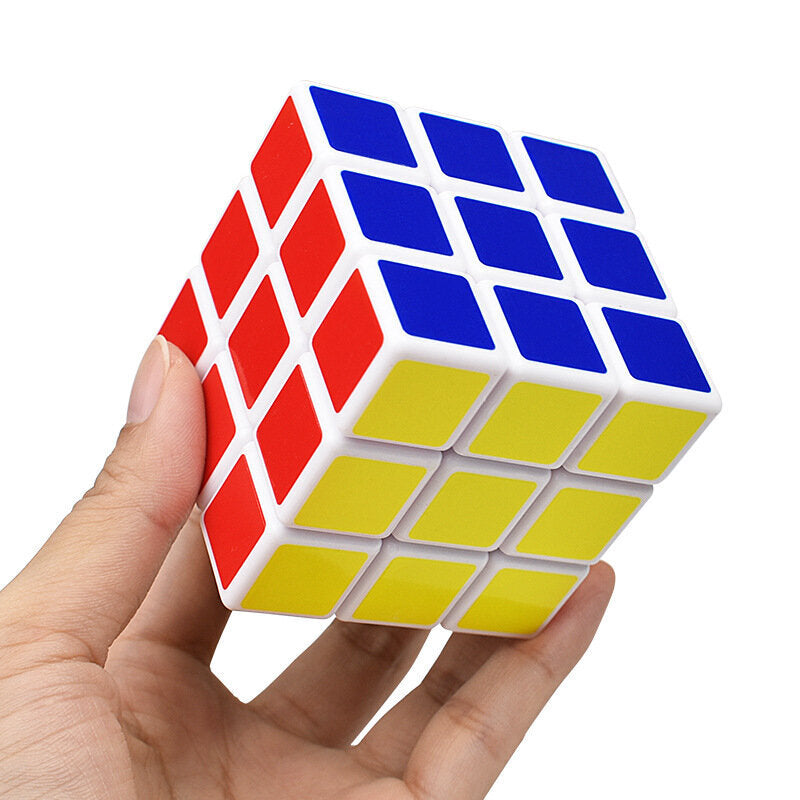Part 1: Introduction to the 5×5 Rubik’s Cube
The 5×5 Rubik’s Cube, also known as the Professor’s Cube, is a larger and more complex version of the classic 3×3 Rubik’s Cube. It has 75 smaller cubes as compared to 27 in the 3×3 cube and comes with a greater number of combinations, making it a more challenging puzzle to solve.
1. Increased complexity:
The 5×5 Rubik’s Cube presents an overwhelming challenge with over 282 trevigintillion possible combinations, a staggering number compared to the 43 quintillion possible combinations in the 3×3 cube. This exponential increase in complexity intensifies the puzzle’s difficulty, making the solving process significantly more daunting. To conquer the sheer magnitude of possible configurations, the development of advanced algorithms becomes not only advantageous but also imperative.
These algorithms are essential for efficiently navigating through the expansive solution space of the 5×5 Rubik’s Cube. They are also effective at addressing its heightened level of intricacy. As a result, the increased complexity of the 5×5 Rubik’s Cube underscores the critical need for advanced algorithms. These algorithms are capable of managing the extensive combinations and permutations presented by the larger puzzle. This emphasizes their indispensable role in laying the groundwork for solving this more complex and formidable variant of the Rubik’s Cube.

2. More layers and movements:
The 5×5 Rubik’s Cube presents a higher level of complexity compared to the 3×3 cube due to its additional layers. With four extra mid-layer slices, there are a total of 11 possible slices, making the puzzle more intricate. The wider range of movements available in the 5×5 Rubik’s Cube demands more sophisticated algorithms to tackle its solution effectively. These additional layers introduce new challenges as solvers must navigate through more intricate configurations. This complexity necessitates the utilization of advanced algorithms and strategic approaches to address the increased number of possible combinations and permutations. The comprehensive understanding and application of these sophisticated algorithms are essential for efficiently and effectively traversing through the complexities presented by the 5×5 Rubik’s Cube, highlighting the critical role of advanced algorithms in conquering this larger and more complex puzzle.
Part 2: Advanced Algorithms for Solving the 5×5 Rubik’s Cube
Solving the 5×5 Rubik’s Cube demands advanced algorithms that go beyond the methods used for the 3×3 cube, taking into account its increased complexity and additional layers.
1. Reduction method:
The reduction method is widely recognized as an effective approach for solving the 5×5 Rubik’s Cube. It encompasses a systematic breakdown of the cube into smaller, more manageable components. This effectively transforms it into a 3×3 cube and leverages algorithms familiar from the smaller puzzle. By simplifying the solving process, the reduction method enables cubers to address each layer sequentially. They can methodically solve the centers and edges as separate tasks. This method streamlines the complex solving process, providing a structured framework for navigating through the numerous combinations and permutations of the 5×5 Rubik’s Cube.
By approaching the puzzle layer by layer, solvers can systematically manage the intricate configurations. They can apply familiar algorithms to address the core and edge pieces. Mastering the reduction method is fundamental for efficiently and effectively solving the 5×5 Rubik’s Cube. This underscores the importance of this approach in managing the increased complexity of the larger puzzle.
2. Commutators and conjugates:
Advanced algorithms for the 5×5 Rubik’s Cube often utilize commutators and conjugates, which are mathematical principles that allow for efficient manipulation of the cube’s components. Commutators involve a sequence of moves that rearrange pieces without affecting the rest of the puzzle, while conjugates combine sequences of moves to achieve specific results. These techniques are essential for solving the 5×5 cube efficiently and are integral to many advanced solving methods.

Part 3: Popular Advanced Solving Methods for the 5×5 Rubik’s Cube
Several advanced solving methods have been developed specifically for the 5×5 Rubik’s Cube, each incorporating sophisticated algorithms to address its unique challenges.
1. Yau method:
The Yau method, developed by Robert Yau, represents a popular advanced solving technique tailored for the 5×5 Rubik’s Cube. This method prioritizes the resolution of center pieces initially, subsequently addressing the edges and the remaining layers. Leveraging a series of advanced algorithms, the Yau method adeptly manages the heightened complexity inherent in the 5×5 cube. It is renowned for its efficiency and speed in the solving process. By laying focus on center and edge piece resolution, the method offers a comprehensive approach. This allows solvers to efficiently navigate through the intricate configurations encountered in the 5×5 Rubik’s Cube. The Yau method’s emphasis on advanced algorithms, strategic layer-by-layer solving, and optimization for speed underscores its significance in tackling the heightened complexities of the 5×5 Rubik’s Cube. This makes it a pervasive choice for those seeking efficient and effective solving techniques for this larger and more intricate puzzle.
2. Hoya method:
The Hoya method, short for “Holey Skewb OLL and Yau”, is another advanced solving method designed specifically for the 5×5 Rubik’s Cube. It involves first solving the center pieces and then the edges, followed by a special technique to orient the remaining pieces in the last layer. The Hoya method leverages advanced algorithms to address the unique challenges of the 5×5 cube and is favored by speedcubers for its effectiveness.
Part 4: The Role of Advanced Algorithms in Competitive Speedcubing
Competitive speedcubing has grown in popularity, with enthusiasts continually pushing the boundaries of solving the Rubik’s Cube, including the 5×5 cube, in record times. Advanced algorithms play a crucial role in competitive speedcubing, enabling participants to tackle the 5×5 Rubik’s Cube with greater efficiency and precision.

1. Efficiency and speed:
Advanced algorithms play a critical role in competitive speedcubing, significantly impacting solve times. They provide speedcubers with the tools to navigate the intricate combinations and permutations of the 5×5 Rubik’s Cube with unparalleled efficiency. Advanced algorithms minimize the number of moves and transitions required to reach the solution. They are instrumental in achieving faster solve times and enhancing overall performance in competitive settings. Emphasizing speed and efficiency necessitates the use of sophisticated algorithms. These algorithms are capable of managing the heightened complexities introduced by the 5×5 cube. They ensure that speedcubers can effectively navigate through its additional layers and increased number of possible combinations. This strategic use of advanced algorithms underscores their essential role in competitive speedcubing. They enable cubers to optimize their solving techniques and achieve faster solve times in tackling the challenges posed by the larger and more intricate 5×5 Rubik’s Cube.
2. Innovation and progression:
The dynamic evolution and enhancement of advanced algorithms for the 5×5 Rubik’s Cube are serving as catalysts for innovation and progression within the competitive speedcubing community. These algorithms are prompting speedcubers to devise new algorithms and refine existing solving methodologies. They aim to improve solve times and streamline the solving process. This continuous innovation and evolution of advanced algorithms are redefining the competitive landscape. They exemplify a culture of relentless improvement and growth within the speedcubing community. The ongoing development and refinement of advanced algorithms inspire cubers to constantly assess and enhance their solving techniques. This spurs a cycle of technological and methodological progression.
As a result, the drive to innovate and improve through the creation and optimization of advanced algorithms is actively reshaping the competitive speedcubing scene, reinforcing the pivotal role of advanced algorithms in propelling innovation and advancement within the 5×5 Rubik’s Cube community.
In conclusion, the 5×5 Rubik’s Cube presents a unique set of challenges that demand advanced algorithms for its solution. From the complexity of its myriad combinations to the need for efficient solving methods, the development and application of sophisticated algorithms are essential for tackling this larger and more complex puzzle. Whether in the pursuit of solving the 5×5 cube as a personal challenge or competing in speedcubing events, the role of advanced algorithms cannot be overstated in mastering this formidable puzzle.





